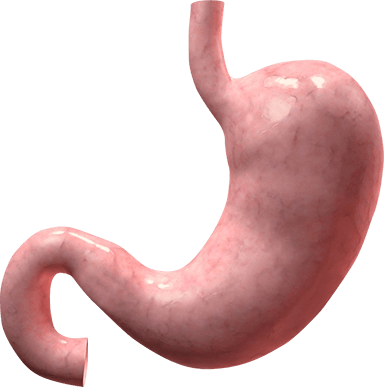DNA test for genetic predisposition to stomach cancer
Stomach cancer is one of the most common malignant tumors. Worldwide, about one million people a year develop stomach cancer, and over half of them die within a year.
by e-mail (anytime):
 EN | USD
EN | USD
by e-mail (anytime):
Stomach cancer is one of the most common malignant tumors. Worldwide, about one million people a year develop stomach cancer, and over half of them die within a year.


The illness mainly strikes men aged between 50 and 60: about 60% of all cases fall into this category. It affects women half as often. The incidence of stomach cancer is gradually falling, but mortality shows the opposite trend. This is principally a result of late detection: the first signs of stomach cancer are non-specific and may not cause significant discomfort, so that a visit to the specialist is usually postponed until the tumor shows signs of disintegration and metastasis.
Countries that actively screen for stomach cancer have succeeded in reducing the mortality rate. In Japan, for example – a country with a very high incidence of the disease – screening programs have led to a good five-year survival rate among stomach cancer patients: the figure there is 53% as against 15–20% survivability worldwide.
The precise cause of stomach cancer has not been established, but many studies have enabled a list of risk factors for the disease to be compiled:
High consumption of starchy foods (potatoes, rice, baked goods);
Insufficient consumption of fresh fruit and vegetables;
Pickles, marinades, smoked foods and piquant foods;
Overweight with excess stomach fat;
Nitrates and nitrates in the diet.
Alcohol consumption:
particularly harmful is the habit of drinking strong spirits (or even surrogate alcohol) on an empty stomach.
Helicobacter pylori bacterial infection:
this is particularly significant in the development of the disease. About 2/3 of the world population are infected with Helicobacter pylori, while only some are affected by the disease, yet the role of this bacterium in the pathogenesis of stomach cancer is not now in doubt.
Epstein-Barr viral infection (EBV):
not all scientists acknowledge the role of this infectious agent in the development of stomach cancer.
Hereditary predisposition:
this is determined by a genotype coding for elevated susceptibility to the carcinogenic effect of adverse factors.
Tobacco smoking:
the carcinogenic effect arises from the swallowing of saliva with a high content of the xenobiotics contained in tobacco smoke.
Pre-cancerous disease
— chronic gastritis (especially if atrophic, with lowered secretion), stomach polyps, previously operated benign stomach tumors. WHO recommendations do not list gastric ulcers as a pre-cancerous condition, but specialists point out that an ulcerous condition can conceal an ulcerated form of cancer, necessitating treatment and close observation of the condition of the ulcer over time if an endoscopy reveals relevant signs.
The risk of developing the disease is multiplied when several of the adverse factors listed above are combined.
The genetic factor is known to be significant in cancer of the stomach. If there is a close relative with stomach cancer in your family history, your risk of contracting the disease is multiplied, rising to 8–10%. In 20% of cases, patients with malignant stomach cancer have relatives with the same disease.
Over a dozen genes are known to be associated with stomach cancer. One of these is CDH1, which codes for the protein E-cadherin, which plays a part in cell-cell interaction.
The active form of this gene multiplies the probability of developing stomach cancer. The detection of the CDH1 gene in a genetic examination requires very serious preventive measures and regular, active diagnosis, as it may mean that the risk of the disease is as high as 85%. In a number of countries, such patients are given a prophylactic gastrectomy (removal of the stomach), although not all oncologists agree that this approach is justified.
Malignant tumors may develop for a long time without symptoms.
The first symptoms of stomach cancer may be non-specific general and local manifestations:
Weakness and reduced working capacity;
A change in taste preferences, a feeling of disgust towards certain types of food (frequently towards meat).
Discomfort in the upper part of the abdomen, often after eating;
Loss of appetite;
Nausea and heartburn.
Unfortunately, the early symptoms of stomach cancer rarely prompt the patient to see a doctor as they are usually not of a severity to disrupt normal life and are perceived as a temporary disorder.
If left untreated, the disease will progress.
Later symptoms of stomach cancer include:
Hardening of the abdomen on palpation:
a large tumor can easily be felt through the abdominal wall;
Bloody vomit
— a sign of tumor disintegration;
Black stool:
this is caused by fermentation of blood released by the disintegration of the primary site.
Jaundice
— a symptom of the involvement of the gall bladder and liver in the pathological process.
Enlargement of the abdomen
as a result of the accumulation of fluid in the abdominal cavity.
Pain in the abdomen or behind the sternum:
this is a symptom of digestive dysfunction and spread of the tumor to neighboring organs.
Back pain:
this may indicate that the cancer has spread to the pancreas.
Late-stage stomach cancer may manifest itself in severe symptoms: intense pain, cancer cachexia and terminal wasting.
Every year, millions of stomach cancer patients spend millions of dollars on treatments that often already hold out no hope of a favorable outcome.
Don’t wait for dreadful symptoms! Take a DNA test for genetic predisposition to stomach cancer and protect yourself and your family.

Malignant tumors of the stomach are heterogeneous conditions in terms of growth form and histological type. The prognosis is largely dependent on which particular group the tumor belongs to. The most frequent histological type is adenocarcinoma. This is characterized by moderate malignancy and relatively slow growth rates. Adenocarcinoma accounts for nearly 90% of all cases of stomach cancer, the other 10% being small-cell, squamous-cell, undifferentiated, or glandular-squamous-cell cancer, carcinoids, and other forms.
The following forms of stomach cancer are distinguished by features of the growth of the primary site:
The stages of stomach cancer are defined using the TNM system.
In addition, the stage classification is used to aid treatment planning and prognosis. In its general form, the classification is as follows:
The main diagnostic tools are EGD and x-ray examination.
With fibrogastroduodenoscopy (FGDS, FGS or EGD) it is possible to visualize the tumor accurately and take a biopsy for histological examination. The informativeness of this technique is high, but dependent on the tumor type and the skill of the specialist conducting the examination.
Another valuable diagnostic method is radiography or radioscopy with contrast. The patient drinks an x-ray-contrastive liquid compound,
then a series of x-rays is taken. These may show a narrowing of the lumen of the stomach, protruding polypoid formations, filling of ulcerous formations, characteristic peristaltic dysfunctions (amenable to identification by x-ray) etc.
Extensive laboratory tests are used to diagnose the patient’s overall condition and any possible complications. Ultrasound scans, CT scans and diagnostic laparoscopy are conducted to detect any metastasis.
Treatment uses surgery, radiotherapy and chemotherapy. A combination of these methods is used in many cases.
The standard treatment for stomach cancer is a radical operation, i.e. the removal of all cancer cells from the body. Such an operation is usually feasible during the early stages of the disease: the rate of favorable outcomes is close to 95% in this patient group. With stage 4 stomach cancer, the prognosis is unfavorable: surgical treatment is carried out only to alleviate the patient’s condition, and the five-year survivability rate is close to zero.
Two main types of operation are used in treatment:
Chemotherapy agents are normally used for preoperative preparation and to reduce the risk of metastasis postoperatively. Chemotherapy preparations act by suppressing the division of the DNA of atypical cancer cells. Their side effects arise from the same effect: the suppression of division affects not only the tumor, but healthy tissue as well, so that chemotherapy is frequently associated with serious complications.
The therapeutic effect of ionizing radiation results from its disruption of the process of replication (division) in the cancer cell’s chromosomal apparatus. Radiotherapy is normally supplementary to the main surgical treatment, but in some cases of inoperable cancer it may be used as a stand-alone palliative approach (to improve the patient’s wellbeing temporarily).
The prevention of stomach cancer involves the elimination of risk factors and early diagnosis.
The most relevant prophylactic measures include:
Early detection of stomach cancer and pre-cancerous pathology is the way to ensure effective treatment going forward. In an absolute majority of cases, the detection of a stage 1 tumor leads to a favorable outcome: diagnosing the disease this early means that a radical operation can be carried out and a life saved.
A DNA test is the only means of identifying a genetic predisposition to stomach cancer. The test results will assist in devising an optimal regime of regular preventive examination and in designing a bespoke preventive program.
Don’t wait for the symptoms: they often appear too late to count on a cure. To make prevention effective, and diagnosis as early as possible, take a DNA test for genetic predisposition to stomach cancer!
